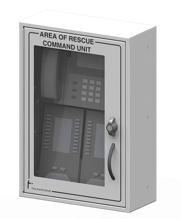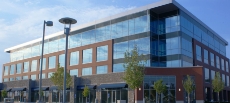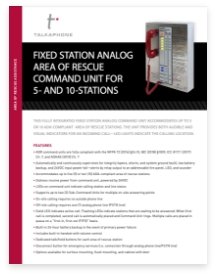 Emergency Communications & Mass Notification technology has caught fire in the security industry in the last few years. It has taken some time, but many vendors in this community have been working hard to overcome some of the obstacles to installing an effective EC&MN system. Security Technology Executive recently caught up with a group of vendors to share their views on where the technology is headed.
Emergency Communications & Mass Notification technology has caught fire in the security industry in the last few years. It has taken some time, but many vendors in this community have been working hard to overcome some of the obstacles to installing an effective EC&MN system. Security Technology Executive recently caught up with a group of vendors to share their views on where the technology is headed.
STE: What are some of the newest technological innovations that are impacting the EC&MN markets?
Samuel Shanes: With the introduction of layered mass notification platforms, timely and relevant message delivery took on a whole new meaning. Everyone realized there is no single technology that fits every situation. A systematic approach should be taken to prioritize and dissect message delivery medium (SMS, e-mail, RSS, LED signage, audio sirens) in order of importance and relevance.
STE: What different technologies and/or methods of EC&MN would be best for a complete, end-to-end solution?
Samuel Shanes: There are certain combinations of technologies that work best for any given situation. The question that one should ask is what type of events will have to be covered by the mass notification system? Weather emergencies and other events where location is irrelevant can be handled by a mass blast through a High Power Speaker Array or digital message delivery via e-mail or SMS. An intruder on campus event, on the other hand, would require a series of targeted broadcasts (audio or visual) to specific segments of a community.
STE: How can end-users overcome the problems with e-mail and text messaging delays, or overwhelming the system, in a mass notification setting?
Samuel Shanes: Segment and prioritize. If the message is critical and needs to reach the intended audience instantly, use intrusive mediums such as audio broadcast. Text messaging and e-mail can be efficiently used as means to follow up with specific instructions, or to react to non-critical events.
STE: What technological advances can we expect in the next 5-10 years?
Samuel Shanes: Expect to see integration on a much wider scale. Every aspect of building infrastructure will be explored and potentially tapped in for message delivery.
STE: Everyone knows that schools and universities are prime candidates for a mass notification system. What other markets could benefit from these systems, and how?
Samuel Shanes: Corporate facilities, large industrial complexes, mass transit, retail and healthcare are a few examples where creative thinking can bring unexpected benefits when the system is used to spread functional and advertorial messages.
Excerpts from an exclusive roundtable-in-print by Paul Rothman, Security Technology Executive, August 18, 2010. Full article can be found at www.securityinfowatch.com







